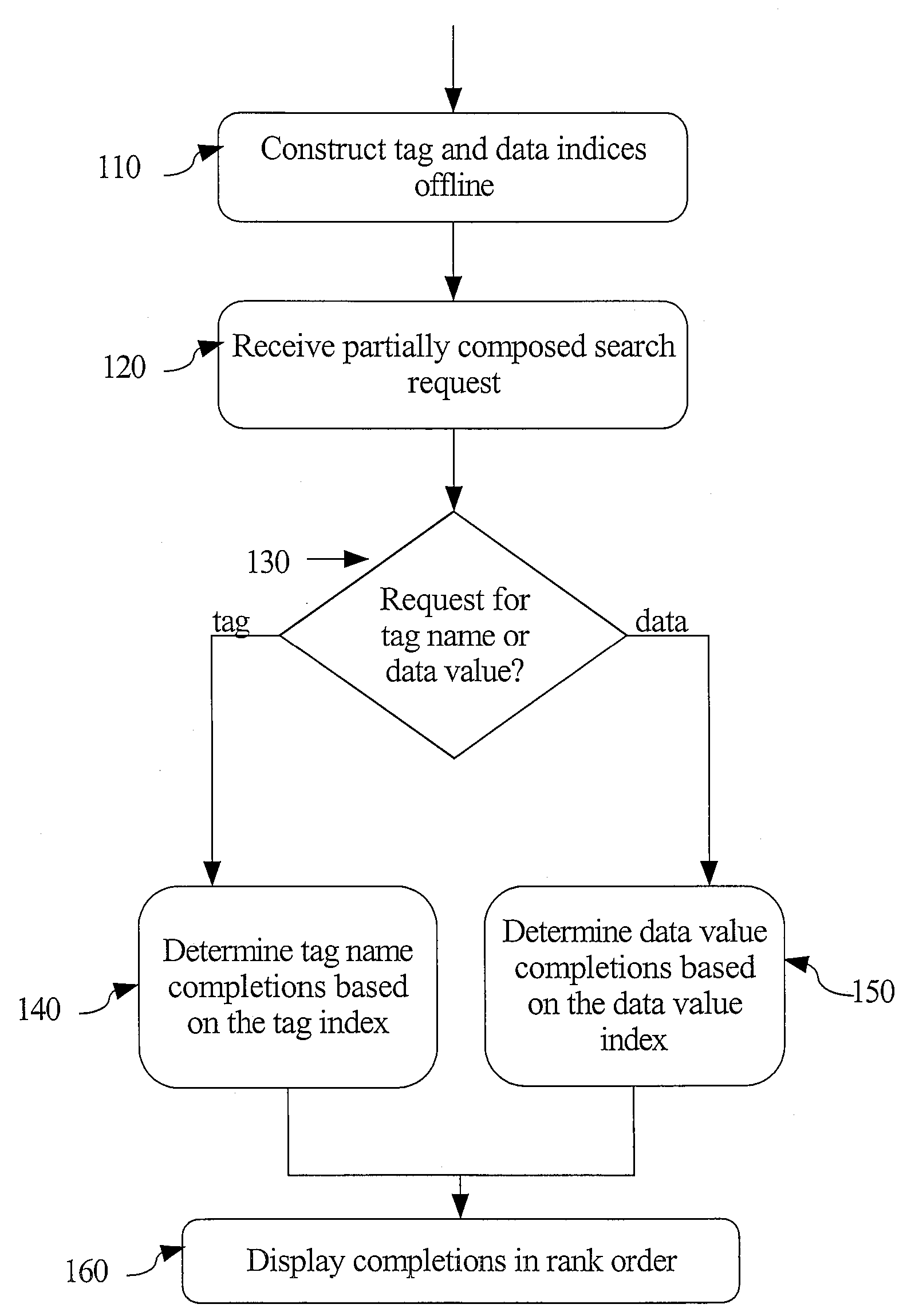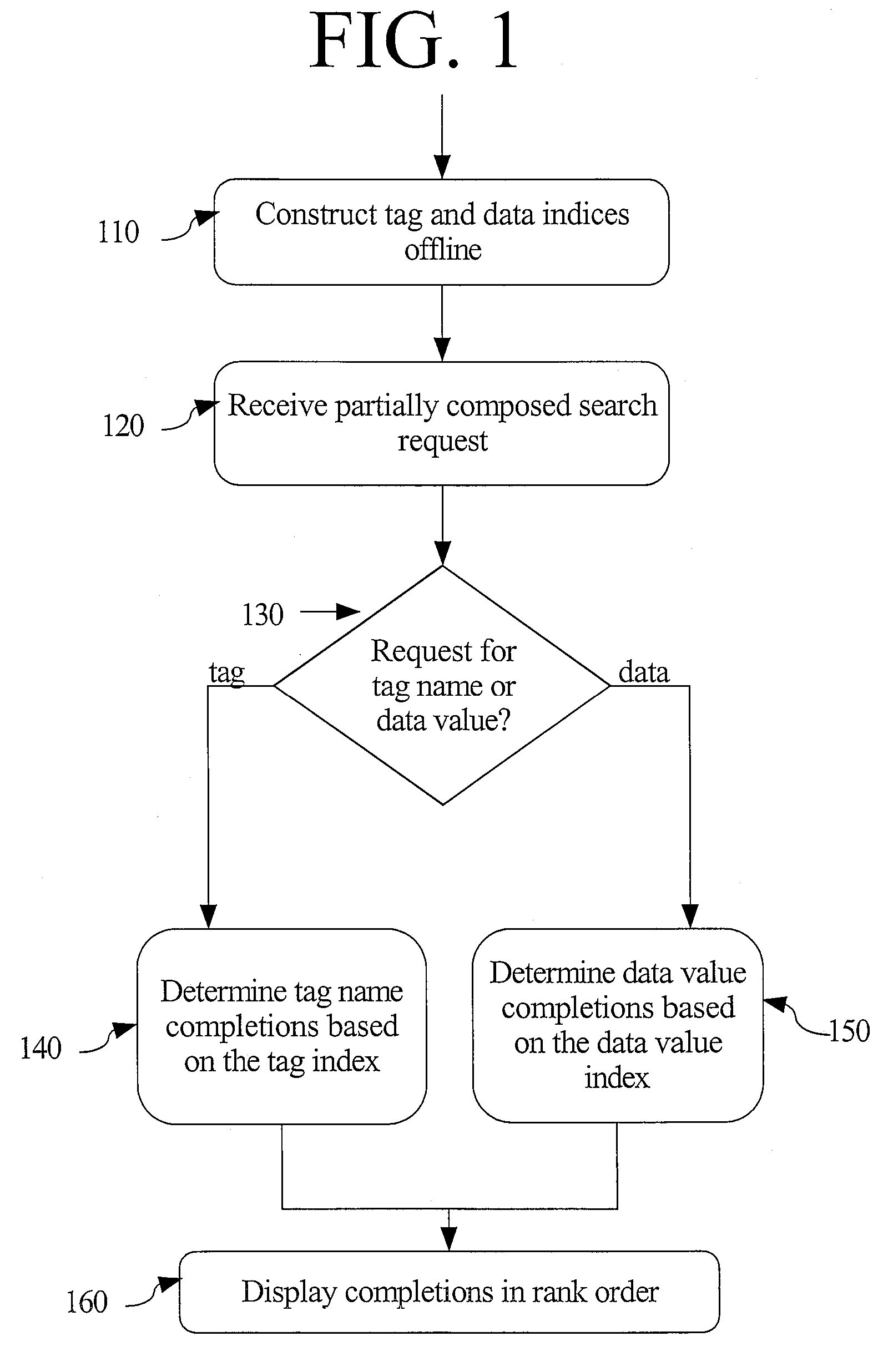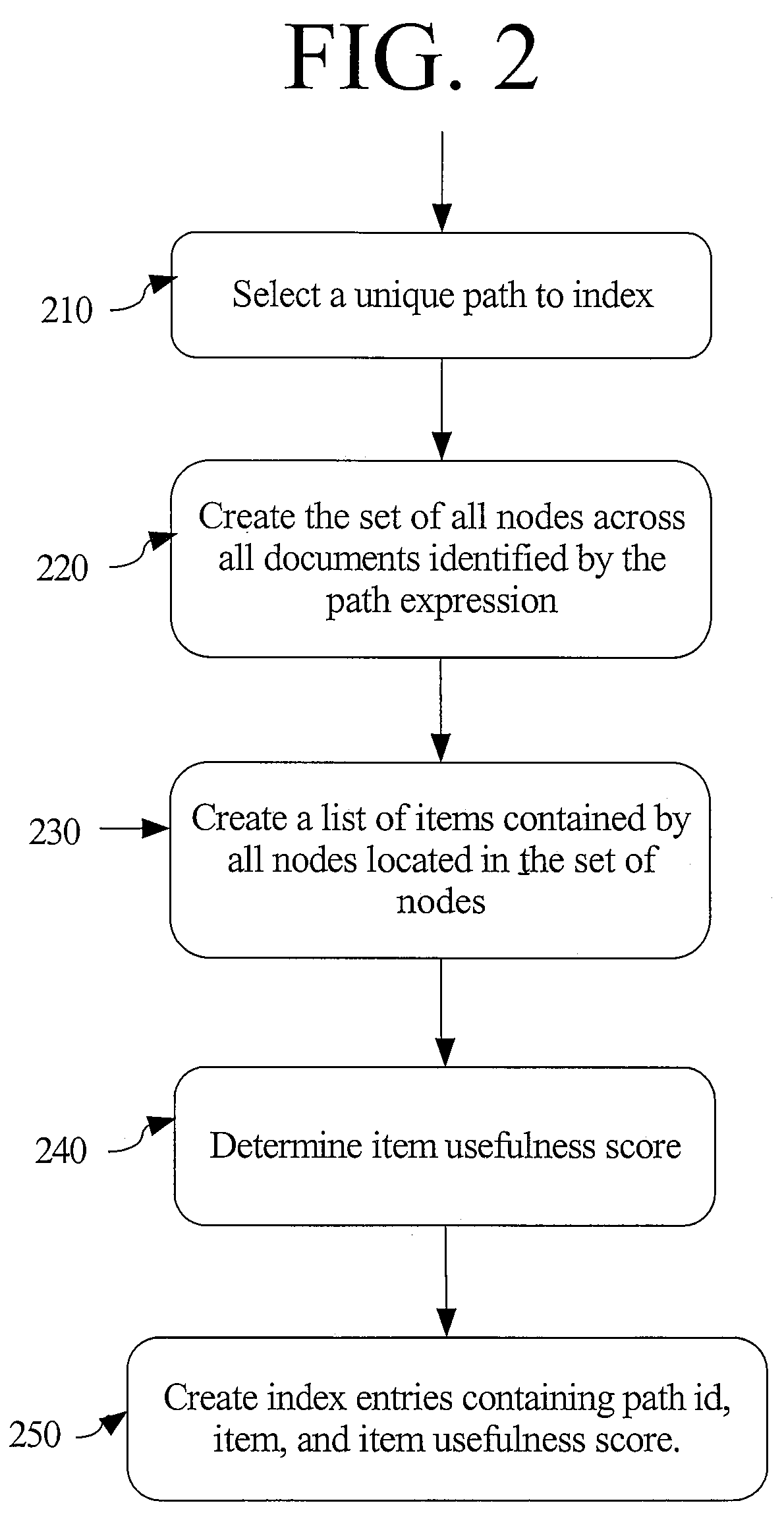Mechanisms For Efficient Autocompletion In XML Search Applications
a technology of xml search application and efficient autocompletion, which is applied in the direction of instruments, computing, electric digital data processing, etc., can solve the problems of not being able to take advantage of the structure of the search, not being able to provide support for searching xml documents,
- Summary
- Abstract
- Description
- Claims
- Application Information
AI Technical Summary
Problems solved by technology
Method used
Image
Examples
Embodiment Construction
Overview
[0023]The following techniques provide support for users searching for data stored in a collection of XML documents. Often, in order to find such data, knowledge of the structure of the XML documents is needed. The techniques also provide support for users to search for XML tags when the documents' structure is not known to the user.
[0024]One way to help users searching for content with only partial knowledge of how to specify the search is to provide auto-completion. Auto-completion involves predicting a word or phrase that the user wants to type in without the user actually typing the entire word or phrase. The words that may complete the user's partially entered search term may be presented to the user sorted in order of the predicted usefulness to the user.
[0025]Providing an XML context-sensitive, auto-completion capability for a user searching for tags and data in a collection of XML documents involves several steps as shown in FIG. 1. First, one or more indices are con...
PUM
 Login to View More
Login to View More Abstract
Description
Claims
Application Information
 Login to View More
Login to View More - R&D
- Intellectual Property
- Life Sciences
- Materials
- Tech Scout
- Unparalleled Data Quality
- Higher Quality Content
- 60% Fewer Hallucinations
Browse by: Latest US Patents, China's latest patents, Technical Efficacy Thesaurus, Application Domain, Technology Topic, Popular Technical Reports.
© 2025 PatSnap. All rights reserved.Legal|Privacy policy|Modern Slavery Act Transparency Statement|Sitemap|About US| Contact US: help@patsnap.com



